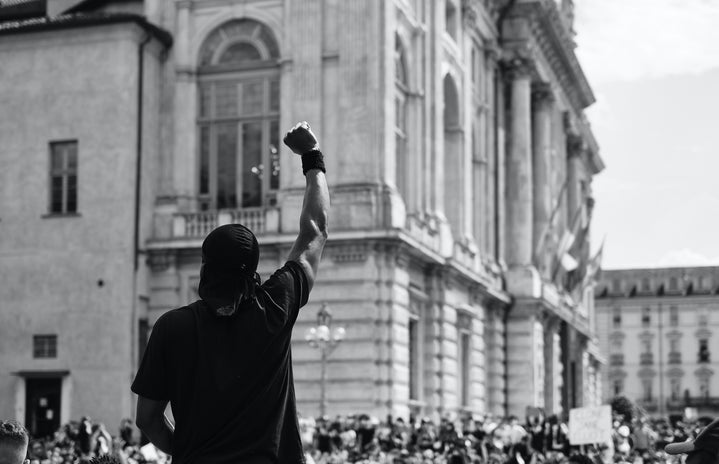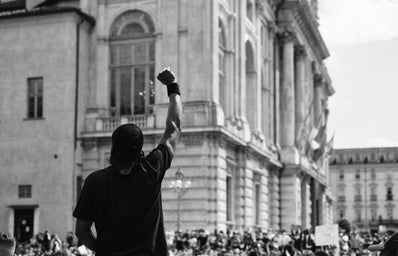The Israel-Palestine conflict is a deeply entrenched, multifaceted conflict that has spanned over a century, resulting in countless deaths of innocent civilians, kids, and older people on both sides. It is vital to understand the roots of this conflict to understand what is happening in Palestine today. This article aims to delve into the history of the conflict, the current situation in Palestine, and whether what we are witnessing right now can be called genocide.
Background
The Palestine-Israeli Conflict can be traced back to 1917, towards the end of the First World War, when the British Government issued the Balfour Declaration recognizing Palestine as an independent state. The Balfour Declaration supported establishing “a national home for the Jewish people in Palestine.” That declaration had far-reaching consequences, directly leading to the Israel-Palestine conflict that has been currently going on for over a century now.
The Balfour Declaration was a letter from British Foreign Secretary Arthur Balfour to Lord Walter Rothschild, a prominent British Zionist leader. The letter was written on November 2, 1917.
This letter further added to the ongoing tensions and expressed support for a national home for the Jewish people in Palestine, which was then a part of the Ottoman Empire.
In 1947, The UN adopted the Partition Plan, which recommended partition of Palestine into Jewish and Arab states. This plan was met with much criticism and resistance from Arab leaders and some Jewish groups. This plan’s implementation in 1948 led to several armed conflicts between the states, leading to the declaration of the State of Israel. Arab nations rejected this plan, which led to the Arab-Israeli war in 1948. This resulted in significant territorial changes and the displacement of a considerable number of Arab Palestinian populations. Estimates of the number of Arabs displaced from their original homes, villages, and neighborhoods during the period from December 1947 to January 1949 range from about 520,000 to about 1,000,000; there is a consensus, however, that the actual number was more than 600,000 and likely exceeded 700,000. The UN partition plan, while well-intentioned, contributed to the complex nature of the Israeli-Palestinian conflict, leading to decades of disputes, wars, and violence in the region. This mass displacement is referred to as the Nakba, meaning “catastrophe” in Arabic, and remains a traumatic event in history.
The Second Palestinian Intifada in 2000 and the Oslo Accords
The conflict experienced further escalations in the latter half of the 20th century, with significant events, including the Six-Day War in 1967, in which Israel gained control of the West Bank, East Jerusalem, and the Gaza Strip. This land is still occupied by the Israeli military, which is a reason for concern in the conflict at hand.
The First Intifada in 1987 and the Second Intifada in 2000 marked significant uprisings against Israeli occupation by the Palestinian youth. The first intifada was a spontaneous demonstration by the Palestinians, which included non-violent protests, rock-throwing, and civil disobedience. Women were at the core of organizing this resistance. This was met with large-scale arrests being made and severe punishments being given by the Israeli Government. Both intifada had a significant impact on Israeli-Palestinian relations, and the second intifada is considered the beginning of the end of the 1990s era negotiating process and the beginning of a darker era of Israeli-Palestinian relations.
In 1993, the Oslo Accords were signed, establishing the Palestinian National Authority and granting limited self-governance to Palestinians in parts of the West Bank and Gaza Strip.
Present Day- What is happening in Palestine now?
The situation in Palestine remains a profoundly complex issue, with ongoing violence, political tensions, and human rights abuses. This conflict took a drastically violent turn on October 7, 2023, when Hamas and other Palestinian armed groups launched Operation Al-Aqsa Flood, coordinated land and air attacks on several Israeli border areas. Operation Al-Aqsa Flood was a brutal surprise attack on Israel that included bombarding the state of Israel with over 3,000 missiles and the air, sea, and land penetration of Israeli territory. Other militants also attacked towns, killing and kidnapping hundreds of Israeli militants and civilians.
The Israel Defense Forces (IDF) retaliated by launching Operation Iron Swords, striking Hamas targets in Gaza. However, that retaliation, backed by nuclear powerhouses like the U.S., has taken a violent turn as it has been going on for about three weeks with no end in sight. Thousands of innocent civilians, over half of whom included kids, lost their lives in the process. A UN human rights expert warned that Palestinians are in grave danger of mass ethnic cleansing and called on the international community to urgently mediate a ceasefire between warring Hamas and Israeli occupation forces.
Can this brutality be called genocide on legal terms?
According to the Center for Constitutional Rights, “The gravest of crimes under international law, genocide refers to specific actions — such as killing or deliberately inflicting conditions of life calculated to bring about the destruction of the group in whole or in part — taken with the intention of destroying, in whole or in part, the group targeted, including on ethnic or national grounds.”
“Excluding those killed at Al-Ahli Hospital, as of October 17, 2023, the Palestinian Ministry of Health had confirmed that 3,000 Palestinians had already been killed, including at least 1,030 children and hundreds of family units; in 11 days, more than 12,500 people had been injured, one million Palestinians displaced, and thousands of homes destroyed, with reports of 1,200 missing people believed to be trapped under the rubble” (Center of Constitutional Rights). The United Nations and experts from other international institutions admitted that the Gaza ministry has long made a good-faith effort to account for the dead under the most challenging conditions.
In the face of the ongoing conflict in the region, it is left to each of us as individuals to contemplate whether this loss of life can be defined as genocide or if it is a form of ethnic cleansing unfolding before us. Regardless of the terminology, what remains unquestionable is the urgent need for international organizations to advocate for an immediate ceasefire, as the imperative is clear: the cycle of violence, death, and suffering must come to an end.


